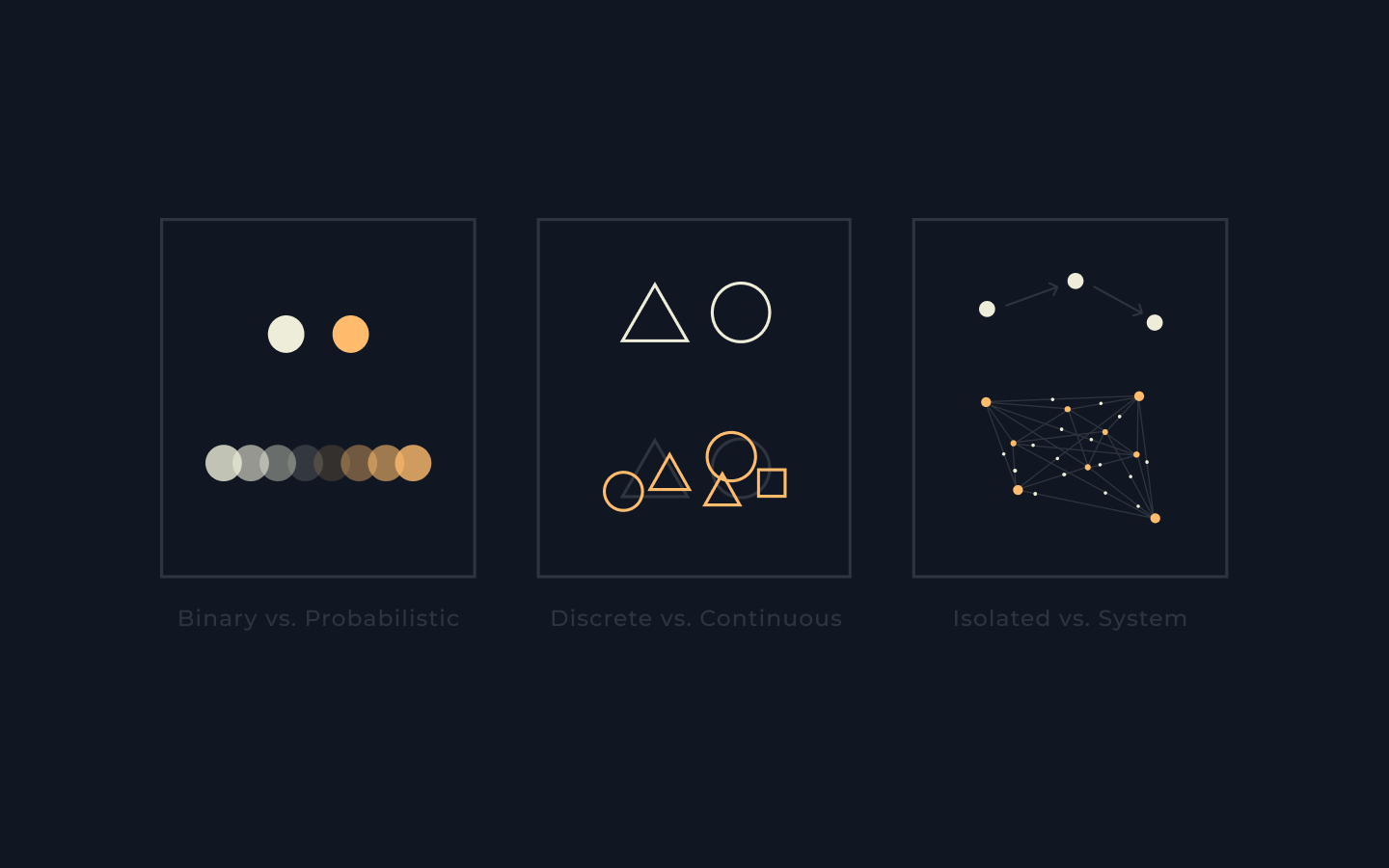3 Hidden Thinking Flaws
How to upgrade your thought process to become a more interesting thinker.
Your brain is an amazing analytical machine. But it also takes shortcuts to simplify your experience.
Often, these shortcuts are necessary. Sometimes, they’re brutally misleading.
You can become a sharper, more interesting thinker if you’re able to add depth and nuance to thoughts that would otherwise dangerously oversimplify the situation.
Here are 3 powerful thinking flaws we regularly fall victim to without noticing — and their remedies to upgrade your thought process:
Binary Thinking vs. Probabilistic Thinking
Discrete Thinking vs. Continuous Thinking
Isolated Thinking vs. Systems Thinking
1. Binary vs. Probabilistic Thinking
Answering either-or questions with weighted outcome scenarios to account for uncertainty and lack of foresight knowledge.
Management
Binary view: Is this strategy good or bad?
Probabilistic view: This strategy is likely to perform better in most scenarios, but in this particular one it will likely perform much worse.
Ethics
Binary view: Will this person do the right thing?
Probabilistic view: In most contexts, this person will likely do something we will typically regard as positive. In particular situations, though, they might do something entirely unexpected with negative consequences.
Medicine
Binary view: Is this drug effective?
Probabilistic view: Based on the evidence collected in specific contexts, this drug is likely to be an effective treatment in those contexts, but has uncertain effectiveness and side effects in some other cases.
2. Discrete vs. Continuous Thinking
Replacing single-category stepwise thinking with multi-category continuous variation.
Economics
Discrete view: What are the preferences of these consumers?
Continuous view: When asked, they said 'X' but this preference could easily change depending on the time, circumstances, and options available.
Education
Discrete view: What’s her highest level of education?
Continuous view: She holds a Bachelor's degree and was just months away from completing her Master's when she received a great job offer. In addition, she has acquired a wealth of knowledge on relevant topics outside of her formal education.
Hiring
Discrete view: Do we need a junior or senior level for this?
Continuous view: We seek a candidate with exceptional design skills and some project management experience. Other qualifications are not relevant at this time.
3. Isolated vs. Systems Thinking
Connecting isolated ideas, topics, and problems with their larger context to produce more portent cause-and-effect analyses.
Product Development
Isolated view: How might a good solution to this user problem P look like?
Systems view: Addressing user problem P alone won't drive any value until we have solved these two other issues to a sufficient degree because they prevent the user from experiencing the solution to P.
Globalism
Isolated view: Does capitalism cause global inequality?
Systems view: Capitalism can cause inequality if not regulated with consideration for human flaws like greed and disregard for others. This could lead to huge wealth gaps as long as people prioritize their own gain and money is able to impact politics.
Personal Life
Isolated view: I just can’t handle stress well.
Systems view: Maybe I can't handle stress only when I'm tired and physically exhausted. It's not necessarily the stress itself that I can't handle, but rather how it interacts with my fear of failure. If I could overcome this fear, I might be able to handle all kinds of stress in a much different way.
Closing
Simplifications are often useful, even necessary. Sometimes, though, nuance is critical.
It’s a superpower to know when to resort to binary, discrete, and isolated thinking — and when to make an extra effort to avoid exactly that.
Here are 3 other concepts you might benefit from:


